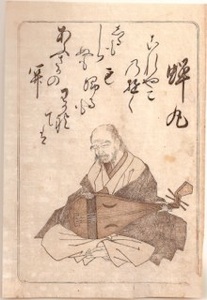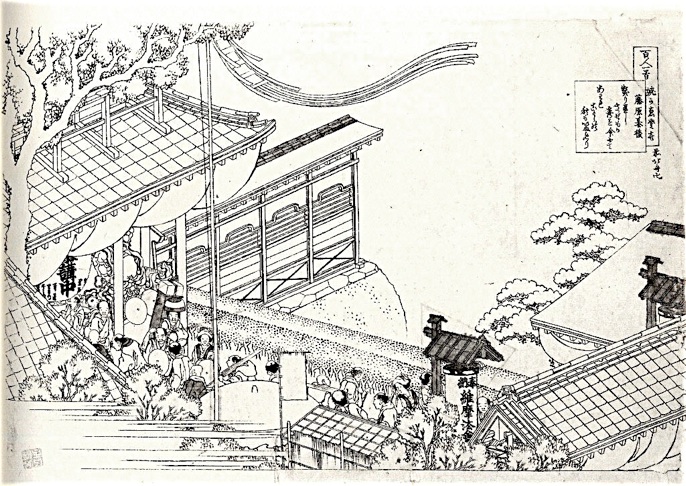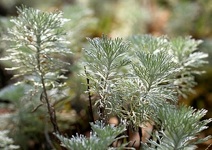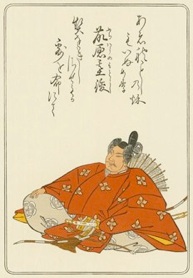藤原基俊


契りおきし
させもが露を
命にて
あはれことしの
秋もいぬめり
ふじわらのもととし
ちぎりおきし
させもがつゆを
いのちにて
あわれことしの
あきもいぬめり
Fujiwara no Mototoshi
Like the promise of
A new life lease given by
The dew on sagebrush,
Alas it looks as if
This year’s autumn passed as well.
Hokusai
Fujiwara no Mototoshi (1060 - 1142) was an influential poet in his time, who often judged in poetry contests and was feared for his criticism. He is said to have been an arch-conservative and reactionary, shunning every form of innovation in poetry and often clashing with his contemporary, Minamoto no Toshiyori (poem 74), who was an innovator. He has more than hundred poems in the Kinyoshu and other anthologies. He also compiled the Shinsen Roeishu (New selections of poems to sing).



The headnote mentions that this poem was composed after Mototoshi complained about his son not receiving a requested official function, and got this poem (Shin Kokinshu 1916) as answer from Tadamichi (the author also of poem 76):
なをたのめしめぢがはらのさせも草わがよの中にあらんかぎりは
Still rely on me!
For I will help those of
this world for as long
as there are sasemo plants
in the fields of Shimeji.
Mototoshi replied to this with his own poem, referring to the sasemo plants again.
Sasemo is an other word for sashimogusa or yomogi (see poem 51), in English ‘mugwort, sagebrush’. One of its varieties is the asagiriso, which means ‘morning mist’, artemisia schmidtiana, silvermound artemisia.
Most commentators believe that sasemo is a pivot word with its underlying reading as sashimogusa, which can also be read as sa shimo gusa, ‘so much I counted on you’. The image of dew is also often used as a metaphor for tears.
Sasemo, asagiriso

On Hokusai’s drawing we see the Buddhist Kofukuji temple in Nara during the Yuima-e festival as is written on the lantern on the right. There is a connection between this temple and the poet as well as the man for whom this poem was written, both being of the Fujiwara clan and the temple being the tutelary Fujiwara temple. The function Mototoshi had requested for his son was that of Lecturer for the Vimalakirti Ceremony at the Yuima-e festival, which is shown on Hokusai’s drawing.

